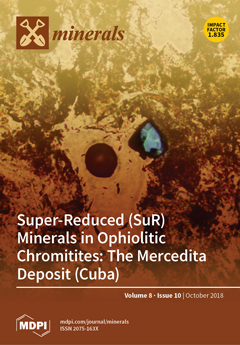Gemstones form in metamorphic, magmatic, and sedimentary rocks. In sedimentary units, these minerals were emplaced by organic and inorganic chemical processes and also found in clastic deposits as a result of weathering, erosion, transport, and deposition leading to what is called the formation of placer deposits. Of the approximately 150 gemstones, roughly 40 can be recovered from placer deposits for a profit after having passed through the “natural processing plant” encompassing the aforementioned stages in an aquatic and aeolian regime. It is mainly the group of heavy minerals that plays the major part among the placer-type gemstones (almandine, apatite, (chrome) diopside, (chrome) tourmaline, chrysoberyl, demantoid, diamond, enstatite, hessonite, hiddenite, kornerupine, kunzite, kyanite, peridote, pyrope, rhodolite, spessartine, (chrome) titanite, spinel, ruby, sapphire, padparaja, tanzanite, zoisite, topaz, tsavorite, and zircon). Silica and beryl, both light minerals by definition (minerals with a density less than 2.8–2.9 g/cm
3, minerals with a density greater than this are called heavy minerals, also sometimes abbreviated to “heavies”. This technical term has no connotation as to the presence or absence of heavy metals), can also appear in some placers and won for a profit (agate, amethyst, citrine, emerald, quartz, rose quartz, smoky quartz, morganite, and aquamarine, beryl). This is also true for the fossilized tree resin, which has a density similar to the light minerals. Going downhill from the source area to the basin means in effect separating the wheat from the chaff, showcase from the jeweler quality, because only the flawless and strongest contenders among the gemstones survive it all. On the other way round, gem minerals can also be used as pathfinder minerals for primary or secondary gemstone deposits of their own together with a series of other non-gemmy material that is genetically linked to these gemstones in magmatic and metamorphic gem deposits. All placer types known to be relevant for the accumulation of non-gemmy material are also found as trap-site of gemstones (residual, eluvial, colluvial, alluvial, deltaic, aeolian, and marine shelf deposits). Running water and wind can separate minerals according to their physical-chemical features, whereas glaciers can only transport minerals and rocks but do not sort and separate placer-type minerals. Nevertheless till (unconsolidated mineral matter transported by the ice without re-deposition of fluvio-glacial processes) exploration is a technique successfully used to delineate ore bodies of, for example, diamonds. The general parameters that matter during accumulation of gemstones in placers are their intrinsic value controlled by the size and hardness and the extrinsic factors controlling the evolution of the landscape through time such as weathering, erosion, and vertical movements and fertility of the hinterland as to the minerals targeted upon. Morphoclimatic processes take particular effect in the humid tropical and mid humid mid-latitude zones (chemical weathering) and in the periglacial/glacial and the high-altitude/mountain zones, where mechanical weathering and the paleogradients are high. Some tectono-geographic elements such as unconformities, hiatuses, and sequence boundaries (often with incised valley fills and karstic landforms) are also known as planar architectural elements in sequence stratigraphy and applied to marine and correlative continental environments where they play a significant role in forward modeling of gemstone accumulation. The present study on gems and gemstone placers is a reference example of fine-tuning the “Chessboard classification scheme of mineral deposits” (Dill 2010) and a sedimentary supplement to the digital maps that form the core of the overview “Gemstones and geosciences in space and time” (Dill and Weber 2013).
Full article





